Where does chocolate come from? Does it grow on trees complete
with a metallic wrapper to protect it?
My chocolate education started on the streets of Ecuador, when I almost ran over two people and
a whole lot of beans on my bicycle. One half of the road was taken
up with cacao beans being dried by the sun's rays.
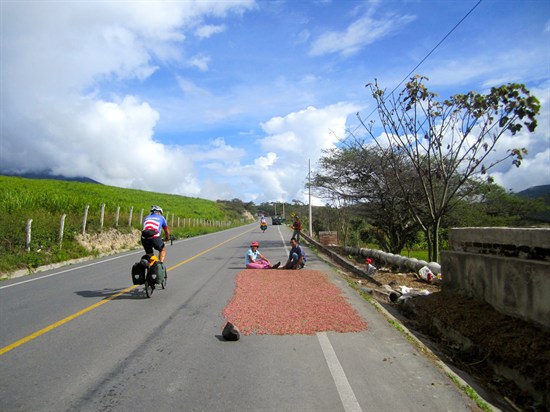
Jumping back a step in the production process, chocolate is a
product of the cacao bean which grows in pod-like fruits on cacao
trees. Monkeys were the first to discover the cacao plant but
they only ate the thick, fruity pulp that surrounds the beans and
spat out the bitter seeds. But mother nature's master plan meant
that they did us the favour of distributing seeds all over Mesoamerica.
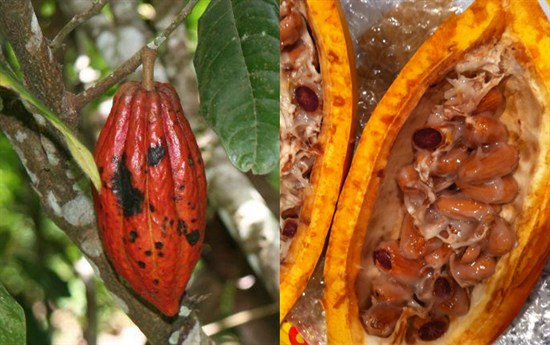
But back to the beans on the road, once the pods are cut open
with a machete and the pulp removed, drying the cacao is an
important part of the process. Under-dry them and the chocolate
will be sour and over-dry them and it will be bitter. Drying the
beans takes 3-6 days depending on the weather and the beans have to
be rotated to ensure they dry evenly. Next they are packed up and
shipped to the chocolate manufacturers and that's where San
Francisco comes in.
My chocolate education continued in the north of America when I
went on a 3 hour gourmet walk. I listened and learned as we ate our
way around a new wave of artisan chocolatiers.
Once the chocolatiers receive the beans they roast them and
winnow away the shell so you're just left with the nib. (A nutty
bitter flaky texture.) The cocoa butter is then pressed out to make
it more stable and workable and many boutiques add it back in
later. Others make good money by selling the cocoa butter on for
use in cosmetics.
First we learned about TCHO: The chocolate scientists. A Nasa Space
Shuttle software developer and the co-founders of Wired magazine
got together to solve a chocolate conundrum:
How do you make dark chocolate melt in the mouth like its milky
counterpart?
With their powers combined they found the answer and partnered
directly with farmers to improve growing, fermentation and drying
methods and to create a better tasting chocolate.
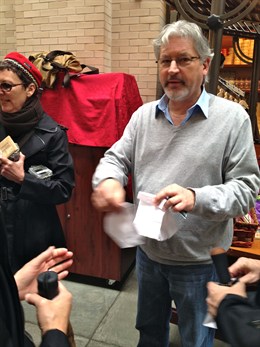
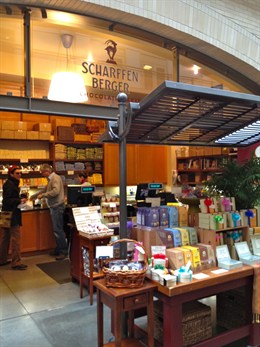
Going by the number of boutique chocolatiers we visited in a 5
block radius, San Franciscans don't mind paying for the good
stuff.
To legally call something chocolate it only has to have 10%
cacao, which means 90% sugar.
The samples we tried were mostly 70-80% cacao. I found that when
it's that highly concentrated not only does it taste better, you
don't need to eat as much of it. Plus the good news is chocolate is
actually a fruit, so the more cacao, the better.
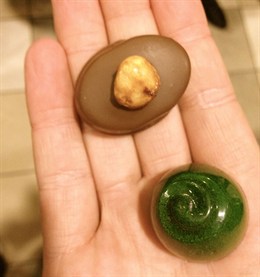
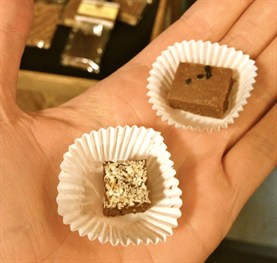
From what I observed, one of the big problems is how
disconnected the people growing the beans and the people eating the
chocolate bars have become. If you ask a child where does chocolate
come from they would probably answer, "the shop". Most of the
workers in cacao growing areas have never had the opportunity to
taste the product that is eventually produced and sold.
Recently CNN did an expose on Chocolate Child Labour and since
then the Hershey company, has pledged $10 million over the next five years
to educate West African cocoa farmers on improving their trade and
combating child labor.
Then there's the issue of farming sustainability. A cacao plant
can produce fruit for more than 25 years, but it's most productive
from years 8-12. Even then they only get 2 pounds of beans per tree
at it's peak which means you need a hell of a lot of trees. The
minimal money farmers receive is not incentive enough for the
time-consuming work of replanting as their trees die off and
waiting three to five years for a new crop to mature.
ATTENTION CHOCOHOLICS: The world could run out of affordable
chocolate within 20 years as farmers abandon their crops.
We made seven stops on our tour and got to experiment and taste
a range of dark chocolate, ganaches and truffles, including champagne truffles (Oprah's faves) and a hot
chocolate to warm us on a cold and rainy day.
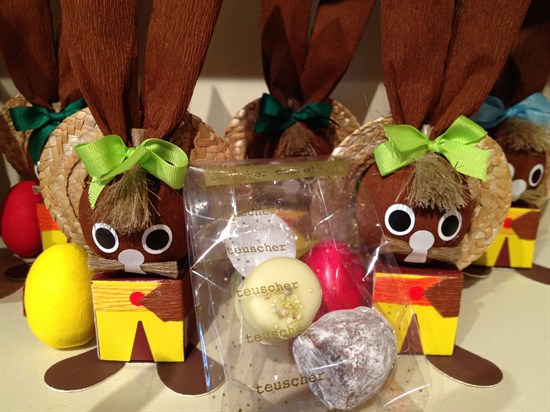
The Champagne truffle is the dusty white looking chocolate
in the bag.
Armed with first-hand knowledge of where it comes from and how
it's made, the experience of eating good quality chocolate becomes
a whole lot sweeter. Rather than buying cheap, sugar-filled bars
made in a non-sustainable manner, from now on I will seek out
smaller quantities of the good stuff.
Thanks to my passionate and quirky chocolate-loving guide
Nicole. For more info on gourmet tours visit: http://www.gourmetwalks.com/chocolate-tour/
------------------------------------------------------
If you want to read more about food and San Francisco you might
like more story about the Jerk's of Cole Valley.